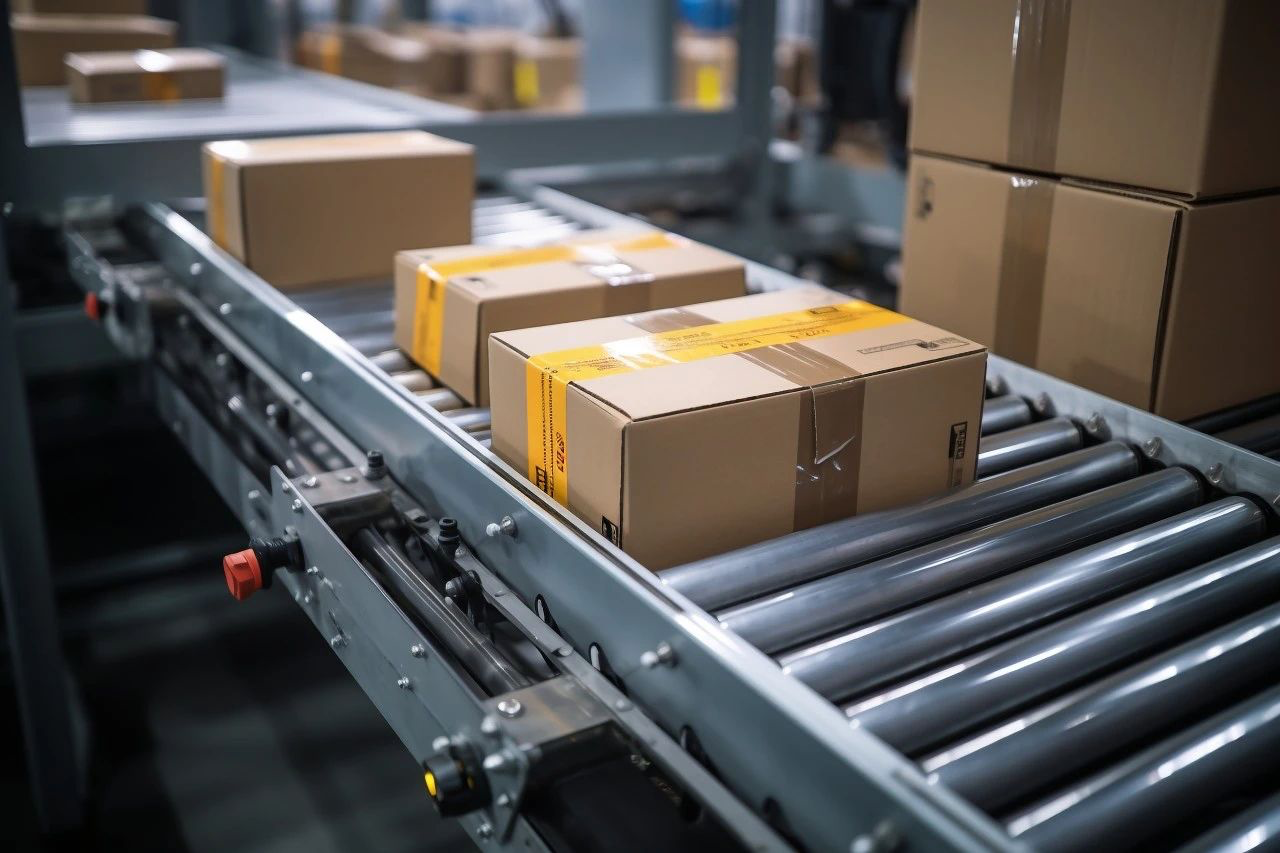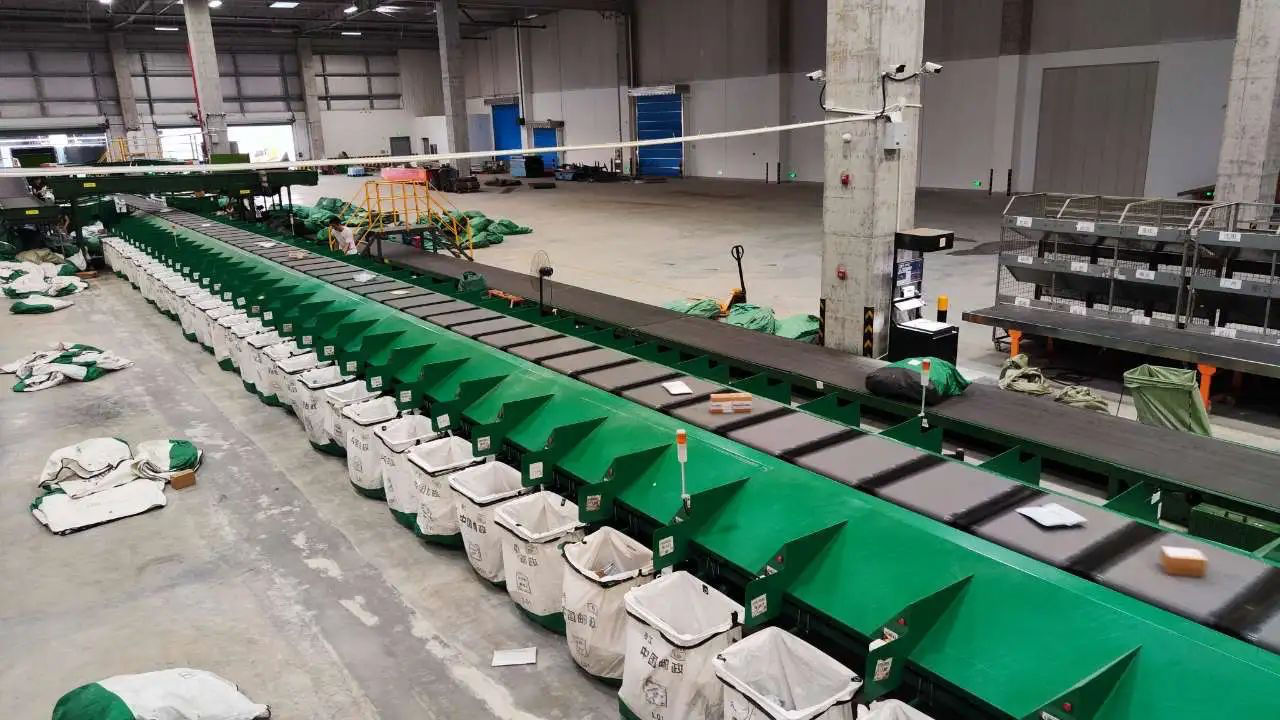With the continuous development of the logistics industry and the rapid growth of e-commerce business, automated sorting systems, as one of the key technologies for cost reduction and efficiency improvement, have gradually become essential equipment for major logistics centers and express delivery companies.
In automated sorting systems, processes such as merging, sorting identification, sorting and diverting, and distribution are closely interconnected, forming a highly intelligent logistics processing workflow.
1. Case Background
The process of the automated sorting system can be roughly divided into four stages: merging, sorting and identification, diverting, and dispatching.
(1)Merging: Parcels are conveyed to the sorting system through multiple conveyor lines and then merged onto a single merging conveyor line.
(2)Sorting and Identification: Parcels are scanned by laser scanners to read their barcode labels, or other automated identification methods are used to input parcel information into the computer.
(3)Diverting: After leaving the sorting and identification device, parcels move on the sorting conveyor. The sorting system continuously monitors the movement position and time of parcels. When a parcel reaches a designated diversion gate, the sorting mechanism executes instructions from the sorting system to divert the parcel away from the main conveyor onto a diverting chute for discharge.
(4)Dispatching: Sorted parcels are manually packed and then transported by conveyor belts to the terminal of the sorting system.g.
2. Field Application
Today’s case study focuses on the sorting and distribution stage of logistics. In the logistics sorting process, items on the conveyor belt come in various sizes. Especially when heavier items pass through the dividers at high speeds, it can exert significant impact on the partitions, transmitting shockwaves throughout the entire sorting production line. Therefore, the control equipment installed on-site requires strong shock resistance.
Most sorting equipment lines are installed in general civilian factories, where grounding systems are rarely implemented. The electromagnetic environment is harsh, demanding modules with high anti-interference capabilities.
To enhance efficiency, conveyor belts need to operate at high speeds, requiring stable signal acquisition and high-speed transmission.
A major logistics sorting integrator recognized the exceptional performance of ODOT’s C-series remote IO system in terms of shock resistance, anti-interference, and stability. As a result, they established a stable partnership with us, making our C-series remote IO system their primary solution for logistics sorting systems.
The low latency of the C-series products fully meets the customer’s requirement for high-speed response. In terms of shock resistance, ODOT’s C-series remote IO system employs unique design features, resulting in outstanding shock resistance performance.
The CN-8032-L selected by the customer achieves a surge and group pulse resistance of up to 2000KV. The CT-121 signal input level supports CLASS 2, ensuring precise detection of electronic signals such as proximity switches.
With stable and reliable product quality, ODOT remote IO has provided the industry with more reliable and efficient solutions. So, that concludes our case study for today. We look forward to seeing you again in the next installment of the ODOT Blog.
Post time: Mar-06-2024








